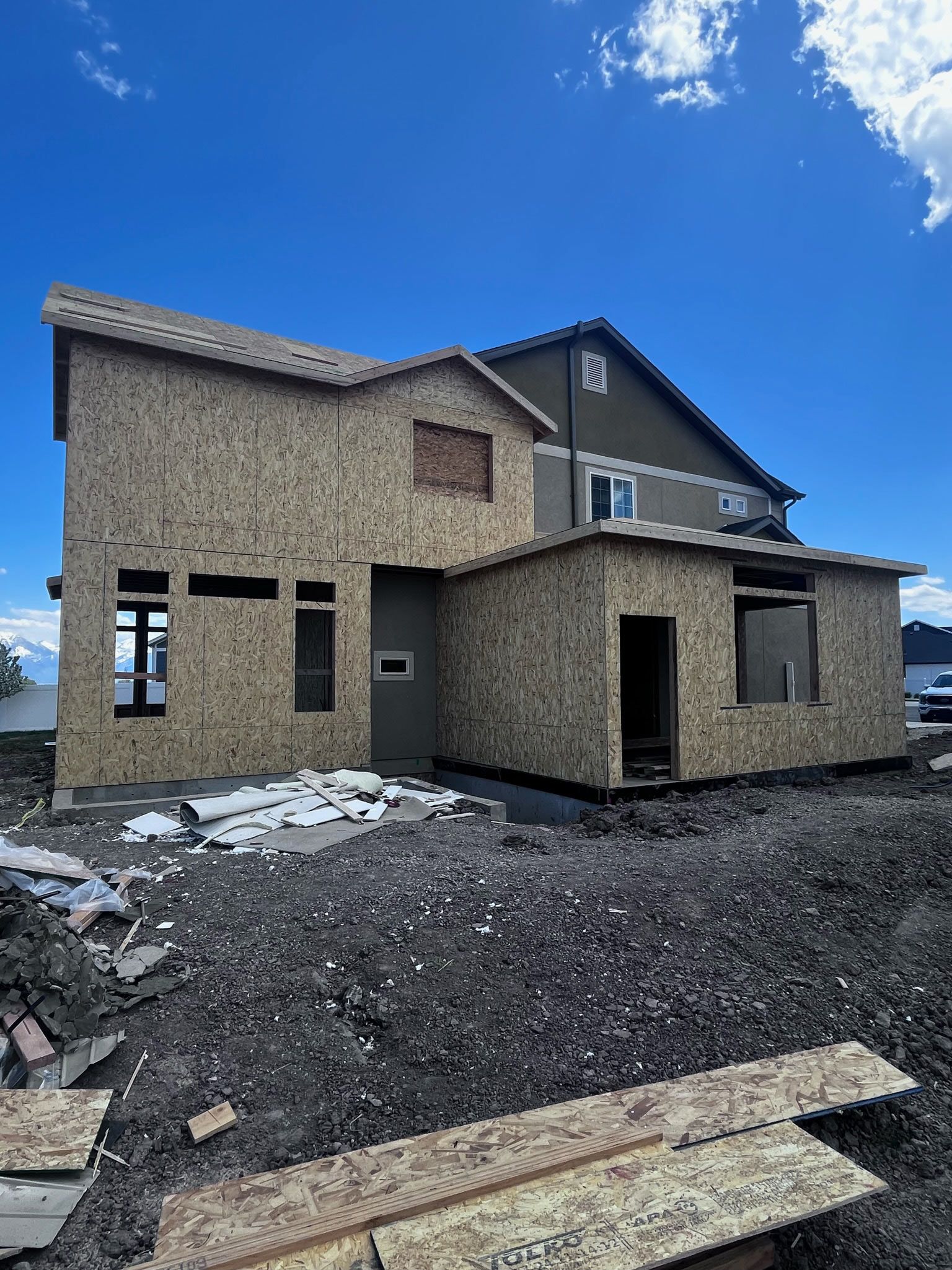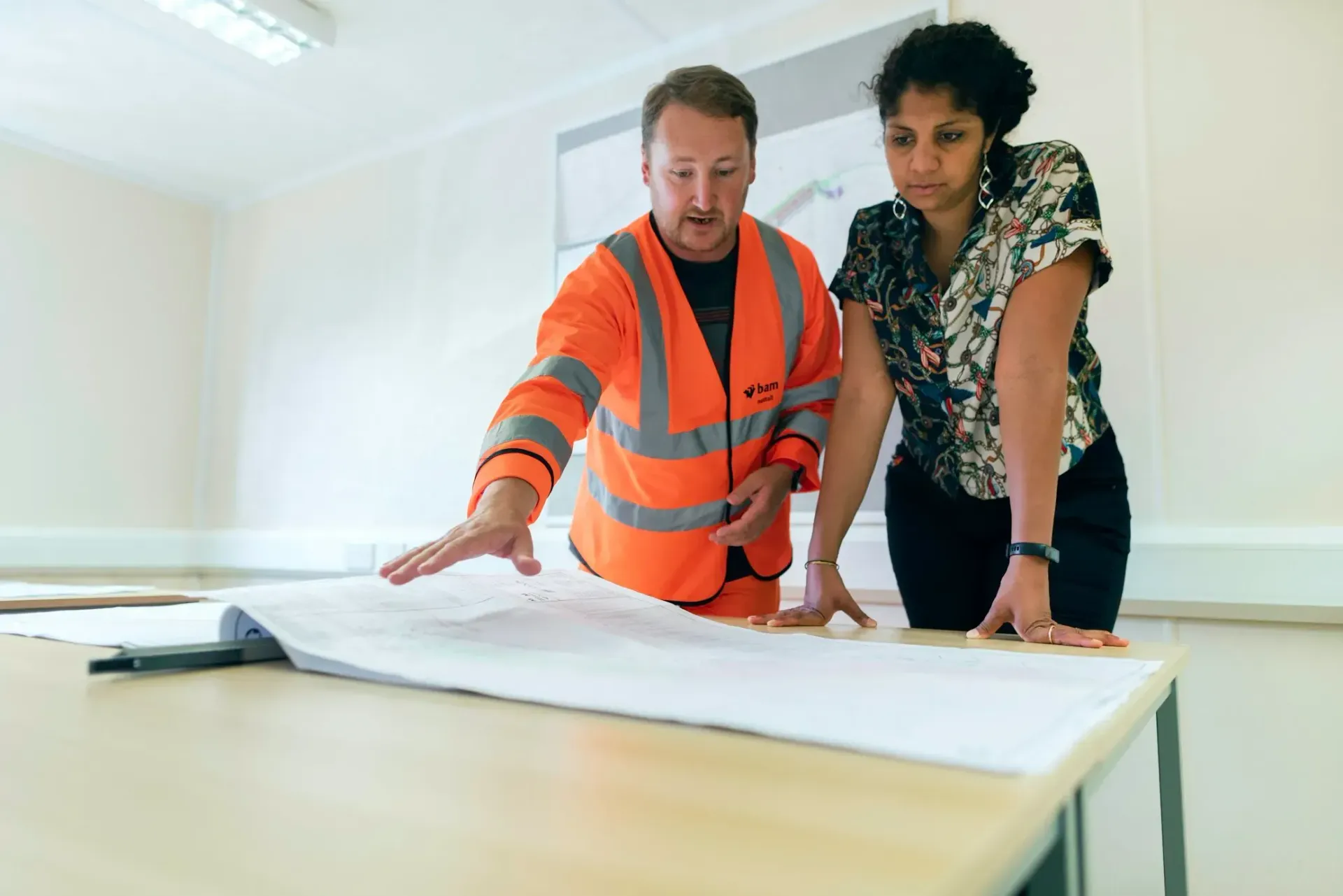Elder-Friendly Home Modifications for Safety & Comfort

How to Create an Elder-Friendly Home: Essential Modifications
As people age, their homes can become less safe and harder to move around in. Making a home elder-friendly boosts safety, accessibility, and comfort. Simple changes can go a long way, whether you’re updating a space for yourself or a loved one. This guide breaks down exactly how to make your home a better fit for seniors.
Why Elder-Friendly Homes Are Essential
Making a home safer for seniors isn’t just about comfort—it’s about reducing risks. As people age, their mobility decreases, and hazards like stairs, slippery floors, or poor lighting can lead to falls or injuries. According to the CDC, millions of older adults experience falls each year, many of which can lead to serious health issues.
By creating an elder-friendly home, you’re not only helping prevent accidents but also promoting independence. Seniors can feel more confident moving around their own space without constantly worrying about safety. It’s a way to maintain dignity and quality of life as they age.
Key Features of an Elder-Friendly Home
To make a home safer and more accessible for seniors, you need to focus on specific features. Here are some key changes to consider:
Wide Doorways and Hallways
For seniors who use wheelchairs or walkers, narrow doorways can be a challenge. Doorways should be at least 32 inches wide to ensure easy movement between rooms. Widening hallways also makes navigating the home safer and smoother.
Non-Slip Flooring
Slippery floors are a major hazard. Hardwood and tile, especially when wet, increase the risk of falls. Installing non-slip mats or switching to carpet in key areas, like hallways or bathrooms, can greatly reduce this risk.
Grab Bars in Bathrooms
Bathrooms are one of the most dangerous places in the home. Installing grab bars near the toilet and inside the shower provides much-needed stability and safety for seniors, helping prevent falls in these high-risk areas.
Stairlifts or Ramps
For seniors with mobility challenges, stairs can be a serious obstacle. Installing a stairlift or building ramps where necessary can make multi-level homes more accessible and easier to navigate.
Improved Lighting
Good lighting is critical for seniors with declining vision. Adding more lights in hallways, staircases, and other key areas improves visibility and reduces the chances of tripping or falling. Motion-activated lights can also be helpful for nighttime use.
These features don’t just make life safer; they can make it easier for seniors to stay in their homes longer without outside help.
Room-by-Room Elder-Friendly Modifications
When making a home elder-friendly, it’s important to focus on specific rooms that pose the most challenges. Let’s break it down room by room:
Bathroom
Walk-in Showers: Stepping over a bathtub edge can be difficult for seniors. Walk-in showers make getting in and out much easier and safer.
Raised Toilets: A higher toilet makes sitting down and standing up less of a strain on the joints. You can also install grab bars near the toilet for extra support.
Non-Slip Mats: Bathrooms are prone to moisture, increasing the risk of falls. Use non-slip mats both inside and outside the shower.
Kitchen
Lowered Counters: For seniors in wheelchairs or those with limited mobility, lower kitchen counters allow easier access to cooking and preparation areas.
Easy-to-Reach Cabinets: Place frequently used items in lower cabinets or drawers. This reduces the need to use step stools or strain to reach higher shelves.
Lever Handles: Replace round knobs with lever-style handles. These are easier to open, especially for those with arthritis or limited hand strength.
Living Room
Stable, Low Furniture: Chairs and couches should be sturdy and not too low to the ground. This makes it easier for seniors to sit down and get back up without assistance.
Clutter-Free Pathways: Keep walkways clear of furniture, wires, or loose rugs that could cause tripping hazards.
Well-Lit Spaces: Ensure the living room has enough lighting, especially in corners or near steps.
Bedroom
Adjustable Bed: Consider an adjustable bed that allows seniors to easily change positions, which can help with mobility and comfort.
Bedside Lighting: Install lights that are easy to reach from the bed, whether through touch lamps or switches within arm’s reach.
Accessible Storage: Place personal items within easy reach on nightstands or dressers to avoid unnecessary bending or reaching.
Entrance
Ramps: Replace stairs at entrances with ramps, making the home more accessible for wheelchairs or walkers.
Handrails:
Ensure all outdoor steps have secure handrails to provide support and balance.
Easy-to-Open Doors: Consider installing automatic doors or doors with lever handles for ease of use.
Top Elder-Friendly Home Products
There are many products designed to make homes safer and more comfortable for seniors. Here are some of the top elder-friendly home products worth considering:
Stairlifts
For homes with multiple levels, stairlifts provide an easy and safe way for seniors to navigate stairs. They’re installed along the staircase and can carry someone up and down with minimal effort. This eliminates the danger of falling on stairs.
Walk-In Bathtubs
Walk-in bathtubs feature a door that allows seniors to step in without having to climb over the edge of the tub. They’re equipped with seating and non-slip surfaces, reducing the risk of falls in the bathroom.
Smart Home Devices
Smart home technology can greatly improve safety for seniors. Devices like voice-activated lights, smart thermostats, and security cameras can all be controlled without the need to get up, making the home easier to manage and more secure.
Grab Bars and Handrails
Installing grab bars in bathrooms and handrails along stairs provides extra support where seniors need it most. These simple products can prevent accidents and offer peace of mind.
Adjustable Beds
Adjustable beds are great for seniors with mobility issues or chronic pain. They allow for easy position changes, which can help with comfort and accessibility, making it easier to get in and out of bed.
Non-Slip Mats and Flooring
Non-slip mats in bathrooms and kitchens, as well as anti-slip treatments for floors, help prevent falls in high-risk areas. These are easy to install and a cost-effective way to improve safety.
How to Assess If Your Home Is Elder-Friendly
Before making changes, it’s important to assess if your home already meets basic elder-friendly standards. Here’s a simple checklist to help you evaluate your space:
Mobility
- Can seniors easily move between rooms without obstacles?
- Are doorways and hallways wide enough for a wheelchair or walker?
- Are there ramps or stairlifts in place for multi-level homes?
Safety
- Are there grab bars in the bathroom and near any stairs?
- Is the flooring non-slip, especially in the kitchen and bathroom?
- Are all rugs secured to the floor to prevent tripping?
Lighting
- Are all areas, especially hallways and staircases, well-lit?
- Are light switches easy to reach from different areas of the room?
- Are there nightlights or motion-activated lights for nighttime use?
Accessibility
- Are commonly used items, like kitchen utensils or bathroom products, within easy reach?
- Are door handles, faucets, and cabinet pulls easy to grip and operate?
- Can seniors easily access important areas of the home, like the bathroom or bedroom, without assistance?
By walking through your home and answering these questions, you’ll have a clearer idea of what modifications are necessary. Even if your home scores well on the checklist, small improvements can make a big difference in daily life for seniors.
How to Hire a Professional for Senior Home Modifications
Not all home modifications are easy to tackle on your own. When it comes to larger projects, like installing stairlifts or remodeling bathrooms, hiring a professional is the best option. Here’s what to look for when choosing the right contractor or service provider:
Specialization in Senior Modifications
Look for professionals who specialize in elder-friendly home modifications. These experts understand the unique needs of seniors and can recommend the most effective changes for safety and comfort.
Credentials and Certifications
Make sure the contractor or service provider is licensed, insured, and has experience in home modifications for seniors. Certifications from organizations like the National Association of Home Builders (NAHB) or Certified Aging-in-Place Specialists (CAPS) are good indicators of expertise.
References and Reviews
Ask for references or read online reviews from previous clients. A well-reviewed contractor who has successfully completed similar projects is more likely to meet your needs.
Get a Detailed Quote
Before starting any work, get a detailed quote outlining the costs of labor and materials. This helps you avoid unexpected expenses and ensures you understand the full scope of the project.
Consider Working with an Occupational Therapist
In some cases, it’s helpful to consult with an occupational therapist. They can assess your home’s layout and recommend modifications based on mobility and health needs. Working with both a contractor and an occupational therapist can ensure the home is fully optimized for safety and accessibility.
Hiring the right professional can take the stress out of making your home elder-friendly, ensuring the job is done safely and efficiently.
Cost of Making an Elder-Friendly Home
The cost of modifying a home to be elder-friendly can vary based on the type and extent of the changes needed. Here’s a breakdown of typical costs for common modifications:
Grab Bars and Handrails
Installing grab bars in bathrooms or handrails along stairways is one of the more affordable modifications. On average, you can expect to spend around $100 to $300, depending on the quality and installation costs.
Stairlifts
Stairlifts are a larger investment, typically costing between $2,000 and $5,000, depending on the complexity of the staircase. If your home has curved stairs, expect the price to be on the higher end of that range.
Walk-In Bathtubs or Showers
Converting a bathroom to include a walk-in bathtub or shower can cost anywhere from $5,000 to $10,000, depending on the fixtures and plumbing adjustments required. While it’s a higher upfront cost, it significantly improves bathroom safety.
Widening Doorways
To accommodate wheelchairs or walkers, widening doorways can range from $500 to $2,500 per doorway, depending on structural changes and materials.
Ramps
Building a ramp for wheelchair access typically costs between $1,000 and $3,000, depending on the length and materials used. Prefabricated ramps can be more affordable, but custom-built ramps may offer a better fit for your space.
Improved Lighting
Upgrading lighting throughout the home, especially with motion sensors or extra fixtures, can range from $500 to $2,000, depending on how many areas need improvements.
Non-Slip Flooring
Installing non-slip flooring or applying non-slip treatments can cost between $1,000 and $3,000, depending on the size of the area. The price will vary depending on whether you’re replacing the flooring or just adding mats and treatments.
While the costs may seem high for larger projects, these modifications are long-term investments in safety and independence, often preventing costly accidents or injuries in the future.
Benefits of an Elder-Friendly Home
Making your home elder-friendly offers significant benefits beyond just safety. Here are some of the key advantages:
Increased Independence
When a home is designed with seniors in mind, it allows them to move around more freely and complete daily tasks without relying on others. Whether it’s navigating stairs with a stairlift or safely using the bathroom, these modifications promote independence.
Enhanced Safety
The primary benefit of an elder-friendly home is reducing the risk of accidents, especially falls. With features like grab bars, non-slip flooring, and improved lighting, seniors can feel safer and more secure in their own space. This helps prevent injuries that can lead to hospital stays or long-term health issues.
Peace of Mind for Families
For family members, knowing that a senior loved one is living in a safe environment brings peace of mind. It reduces the worry about potential accidents and makes it easier to allow seniors to age in place, without the immediate need for assisted living.
Improved Quality of Life
Seniors who live in homes designed for their needs often report a higher quality of life. They feel more comfortable, confident, and secure in their surroundings. This can lead to better mental health and overall well-being.
Long-Term Savings
While some modifications come with upfront costs, they can save money in the long run by reducing medical bills from falls or accidents. Plus, aging in place can be much more affordable than moving into an assisted living facility.
By creating an elder-friendly home, you’re not only investing in safety but also in the long-term health and happiness of your loved ones.
Conclusion
Making your home elder-friendly is one of the best investments you can make for the safety, comfort, and independence of aging family members. Simple changes like adding grab bars, improving lighting, or installing stairlifts can dramatically reduce the risk of accidents. Beyond safety, these modifications promote confidence and a higher quality of life for seniors. Whether you’re making adjustments for yourself or a loved one, the long-term benefits are undeniable.
Ready to make your home safer and more comfortable for seniors? Contact Foundation Finishes for expert home remodeling services. Whether you need basement finishing, home remodels, home additions, or bathroom and kitchen remodeling, our team in Centerville, UT is here to help you create a space that's safe, functional, and beautiful.
Let us help you design an elder-friendly home that meets your needs and enhances your quality of life.
frequently asked questions
What are the most affordable elder-friendly home modifications?
The most affordable modifications include installing grab bars in bathrooms, adding non-slip mats, improving lighting, and securing rugs to prevent tripping. These simple changes can cost as little as $100 to $500 but can have a big impact on safety.
Can rental homes be modified for elderly accessibility?
Yes, many modifications like adding grab bars or using non-slip mats are temporary and non-invasive, making them suitable for rental homes. However, larger changes, such as widening doorways or installing ramps, may require permission from the landlord.
Are there government programs that help fund senior home modifications?
Yes, there are several programs that can help. Medicaid, Medicare Advantage, and the Department of Veterans Affairs often offer financial assistance for home modifications. Additionally, some local governments and nonprofit organizations provide grants or low-interest loans for these changes.
What are some simple ways to make a home safer for seniors without major renovations?
Easy improvements include removing tripping hazards like loose rugs, using brighter light bulbs, installing grab bars in bathrooms, and placing frequently used items within easy reach. These changes are low-cost but can greatly improve safety.
Do insurance plans cover elderly home modifications?
In some cases, yes. While standard homeowners’ insurance typically doesn’t cover modifications, long-term care insurance and specific Medicare Advantage plans may provide some coverage for home improvements that enhance accessibility or safety.


